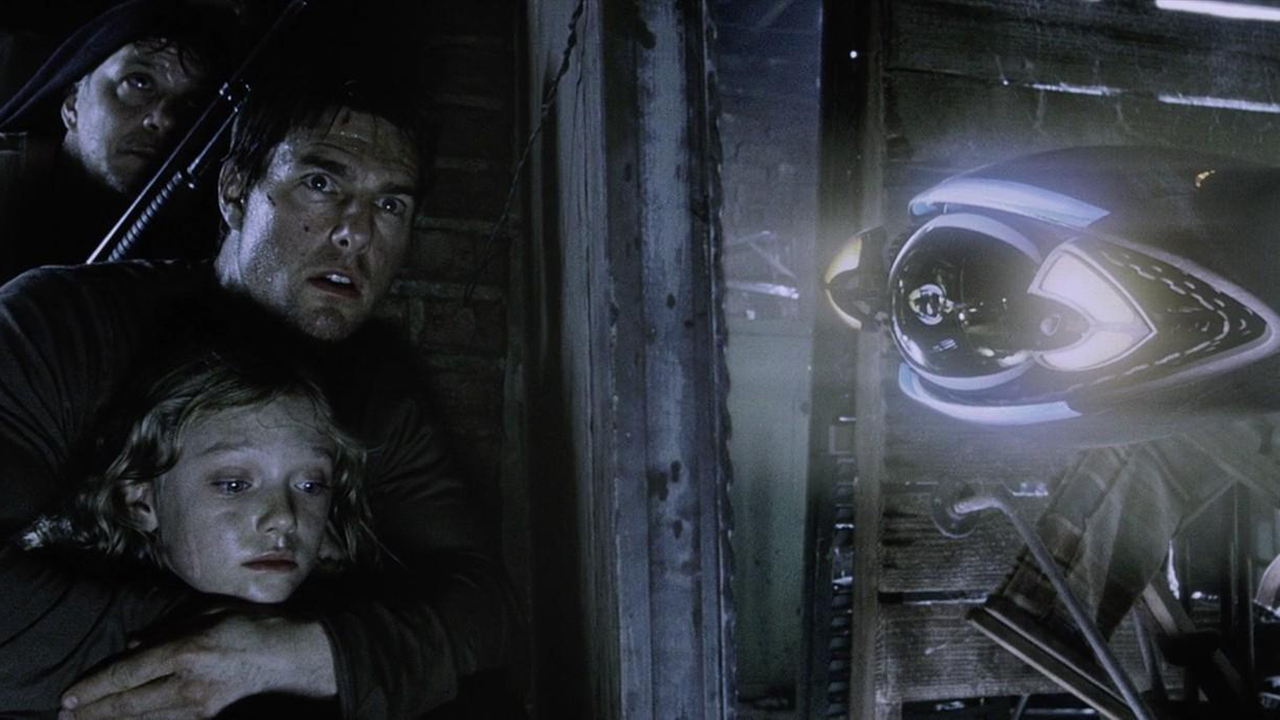Starlink satellites: Facts, tracking and impact on astronomy
Are Starlink satellites a grand innovation or an astronomical menace?
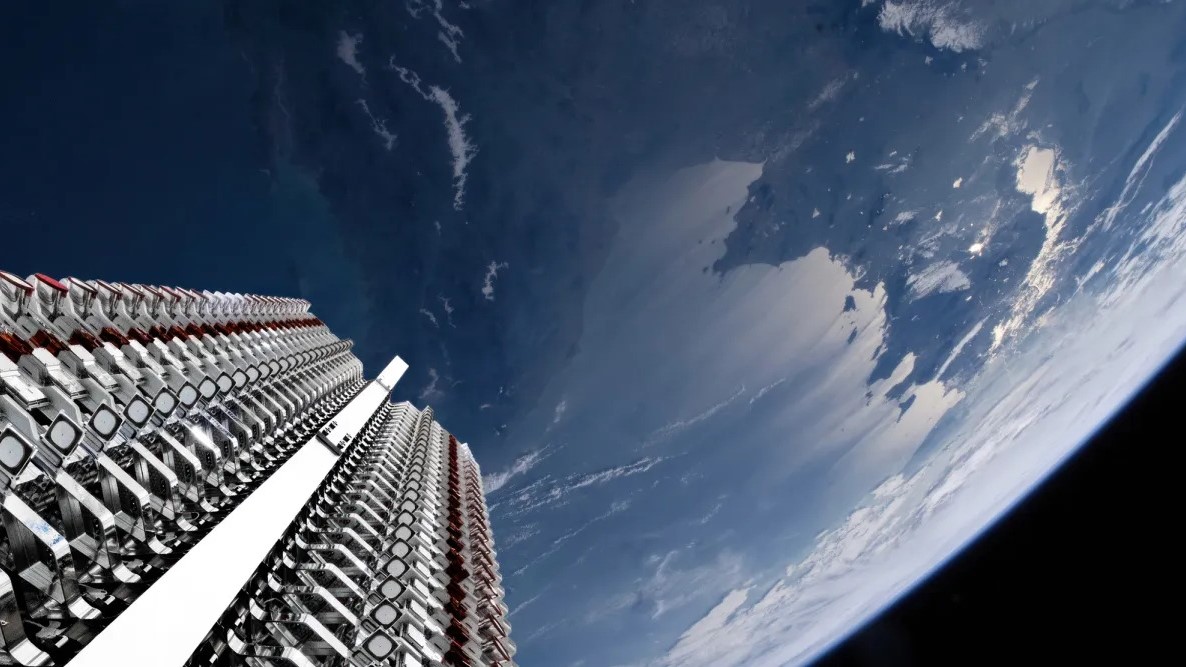
Starlink is the name of a satellite network developed by the private spaceflight company SpaceX to provide low-cost internet to remote locations.
A Starlink satellite has a lifespan of approximately five years and SpaceX eventually hopes to have as many as 42,000 satellites in this so-called megaconstellation.
How many Starlink satellites are in orbit?
As of June 26, 2025, there are currently 7,875 Starlink satellites in orbit, of which 7,855 are working, according to Astronomer Jonathan McDowell, who tracks the constellation on his website.
The current V2 Starlink satellite version weighs approximately 1,760 lbs (800 kilograms) at launch, almost three times heavier than the older generation satellites (weighing in at 573 lbs or 260 kg), according to Spaceflight Now.
Related: Wild solar weather is causing satellites to plummet from orbit
The size and scale of the Starlink project concerns astronomers, who fear that the bright, orbiting objects will interfere with observations of the universe, as well as spaceflight safety experts who now see Starlink as the number one source of collision hazard in Earth's orbit. In addition to that, some scientists worry that the amount of metal that will be burning up in Earth's atmosphere as old satellites are deorbited could trigger unpredictable changes to the planet's climate.
How to see starlink satellites
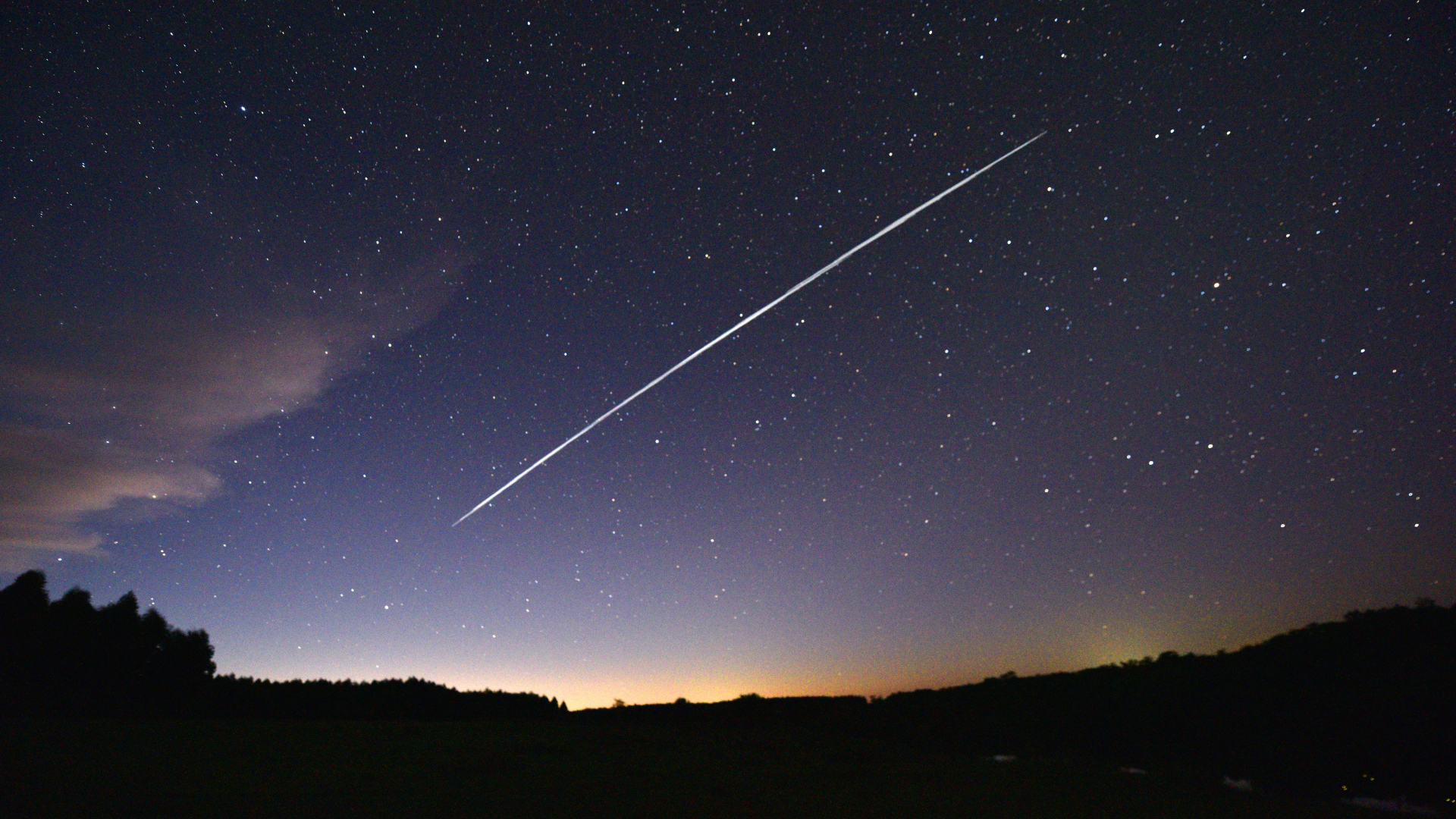
Starlink satellites orbit approximately 342 miles (550 kilometers) above Earth and put on a spectacular show for observers as they move across the sky. This show is not welcomed by all and can significantly hinder both optical and radio astronomical observations.
You don't need any special equipment to see Starlink satellites as they are visible to the unaided eye. The satellites can appear as a string of pearls or a "train" of bright lights moving across the night sky. Starlink satellites are easier to see a day or two after their launch and deployment then become progressively harder to spot as they climb to their final orbital height of around 342 miles (550 km).
Related: Starlink satellite train: How to see and track it in the night sky
Our list of the best stargazing apps may help you with your Starlink viewing planning. If you want to see where all of the Starlink satellites are located in real-time check out this Starlink map showing the global coverage of each Starlink satellite as well as information on how many are currently in service, inactive or have burned up in Earth's atmosphere.
Related: How to photograph Starlink satellites guide.
Starlink coverage
To see current Starlink internet availability around the world, and if it's available where you are, Starlink has an interactive map detailing locations where Starlink internet is available, which areas are on the waitlist as well as areas that are "coming soon".
"Starlink is ideally suited for areas where connectivity has been unreliable or completely unavailable," the Starlink main page states. "People across the globe are using Starlink to gain access to education, health services and even communications support during natural disasters."
More information about Starlink setup, along with answers to frequently answered questions, are available on the customer service page.
The history of Starlink
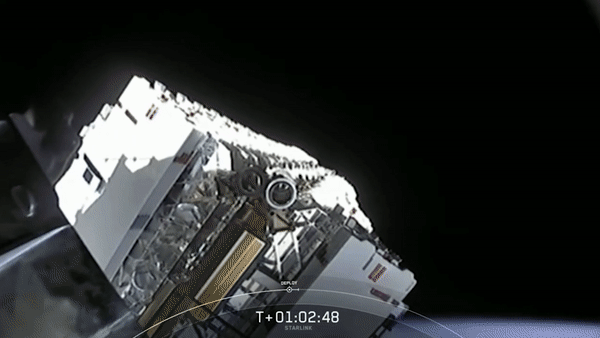
SpaceX's satellite internet proposal was announced in January 2015. Though it wasn't given a name at the time, CEO Elon Musk said that the company had filed documents with international regulators to place about 4,000 satellites in low Earth orbit.
"We're really talking about something which is, in the long term, like rebuilding the internet in space," Musk said during a speech in Seattle when revealing the project.
SpaceX's satellite internet proposal was announced in January 2015. Though it wasn't given a name at the time, CEO Elon Musk said that the company had filed documents with international regulators to place about 4,000 satellites in Low Earth Orbit.
"We're really talking about something which is, in the long term, like rebuilding the internet in space," Musk said during a speech in Seattle when revealing the project.
Musk's initial estimate of the number of satellites soon grew, as he hoped to capture a part of the estimated $1 trillion worldwide internet connectivity market to help achieve his Mars colonization vision. The U.S. Federal Communications Commission (FCC) has granted SpaceX permission to fly 12,000 Starlink satellites, and the company has filed paperwork with an international regulator to loft up to 30,000 additional spacecraft.
To put that into perspective, as of Nov. 7, 2022, only 14,450 satellites have been launched in all of history with 6,800 currently active according to the European Space Agency (ESA).
SpaceX launched its first two Starlink test craft, named TinTinA and TinTinB, in February 2018. The mission went smoothly. Based on initial data, the company asked regulators for its fleet to be allowed to operate at lower altitudes than originally planned, and the FCC agreed.
The first 60 Starlink satellites launched on May 23, 2019, aboard a SpaceX Falcon 9 rocket. The satellites successfully reached their operational altitude of 340 miles (550 kilometers).
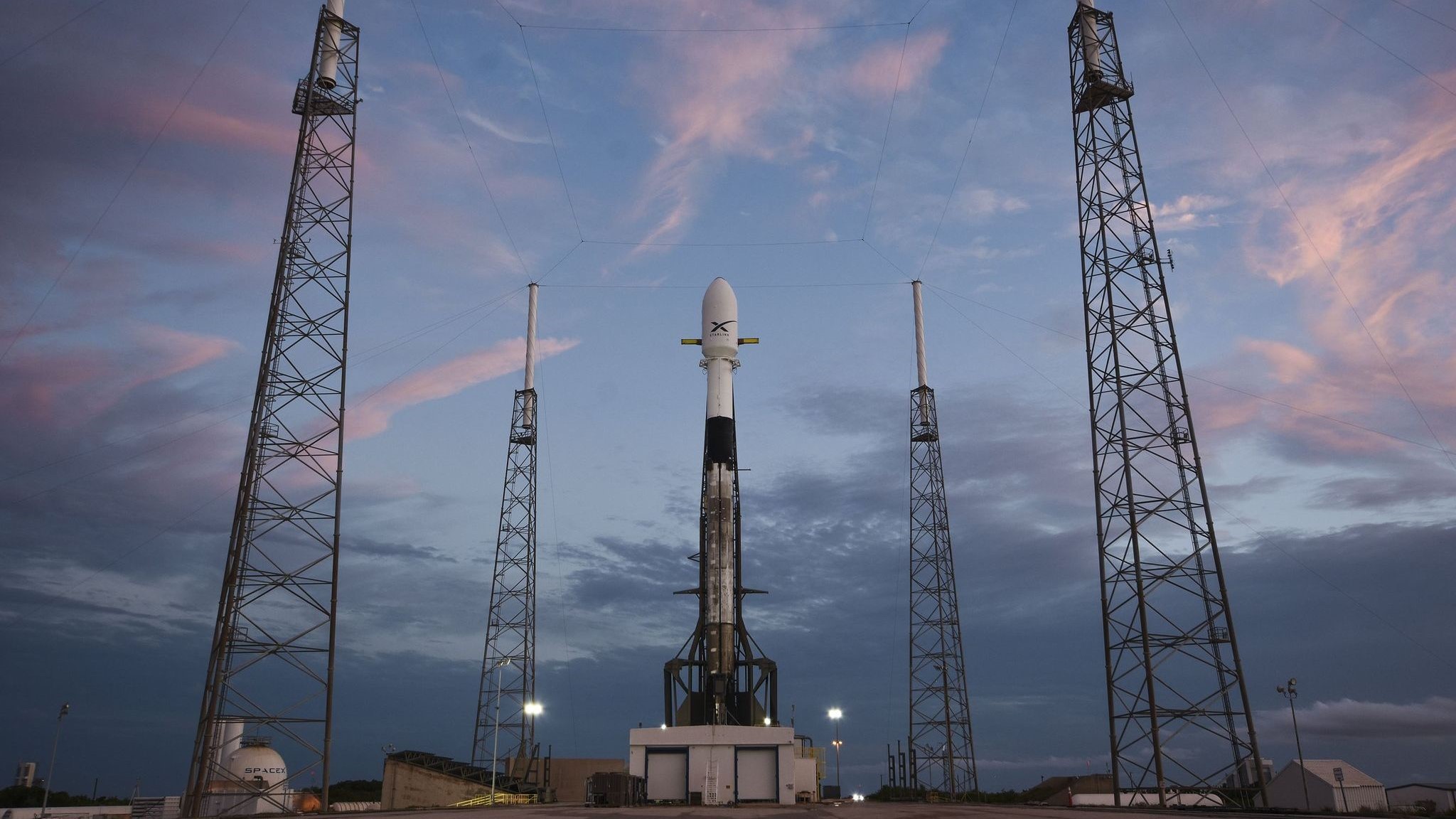
Starlink's impact on astronomy
Within days of the first 60-satellite Starlink launch, skywatchers spotted a linear pearl string of lights as the spacecraft whizzed overhead in the early morning. Web-based guides showed others how to track down the spectacular display.
"This was quite an amazing sight, and I was shouting 'Owowowow!' when the bright 'train' of objects entered into view," Netherlands-based satellite tracker Marco Langbroek told Space.com in 2019 via email. "They were brighter than I had anticipated."
That brightness was a surprise to almost everyone, including both SpaceX and the astronomical community. Researchers began to panic and shared photos of satellite streaks in their data, such as this trail image from the Lowell Observatory in Arizona.
They expressed particular concerns about future images from highly sensitive telescopes such as the Vera Rubin Observatory (formerly known as the Large Synoptic Survey Telescope), which will study the entire universe in exquisite detail and is expected to come online in 2022. Radio astronomers are also planning for interference from Starlink's radio-based antennas.
In photos: SpaceX launches 60 Starlink satellites to orbit
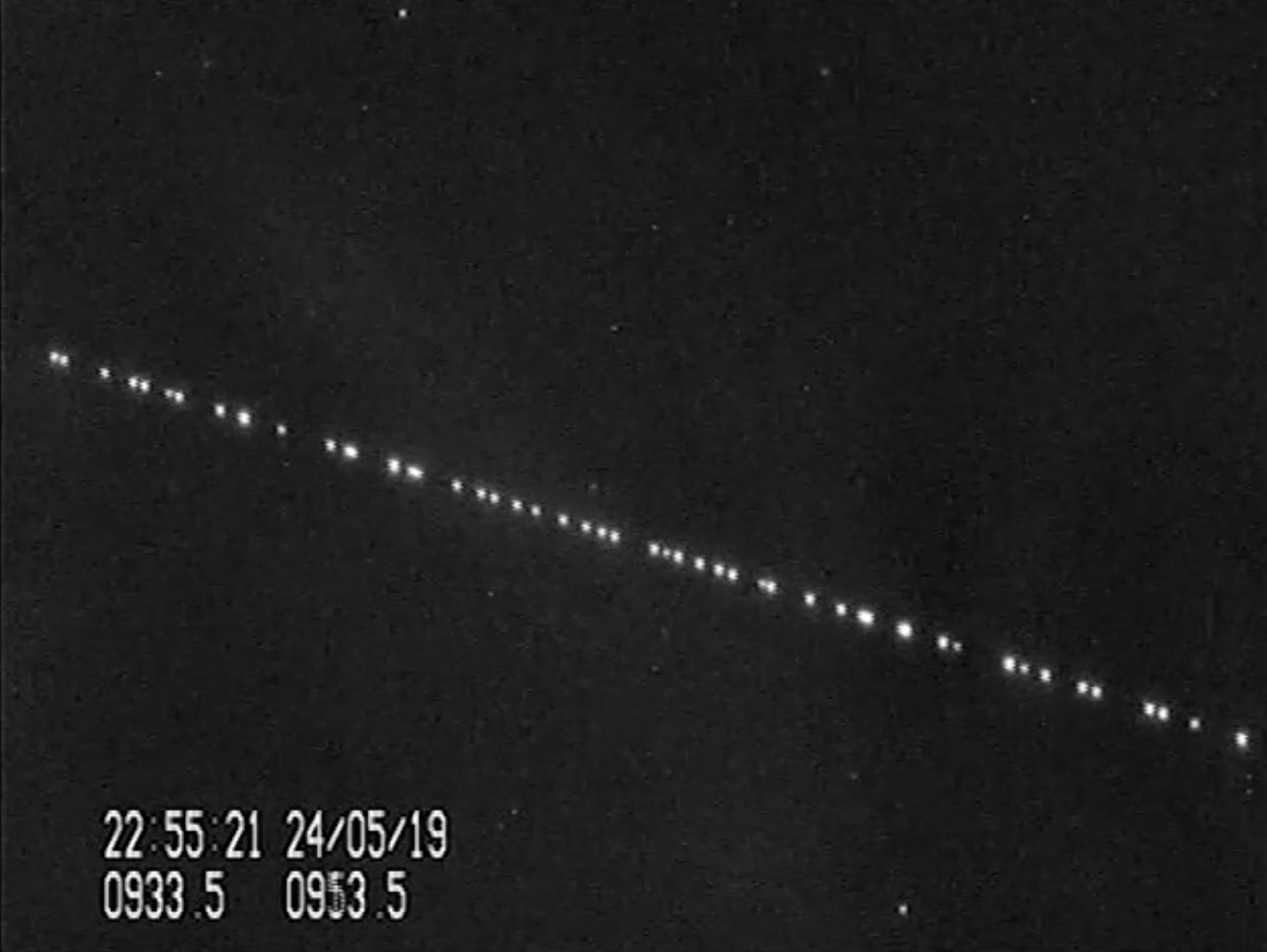
The International Astronomical Union (IAU) expressed concerns in a statement released in June 2019. "Satellite constellations can pose a significant or debilitating threat to important existing and future astronomical infrastructures, and we urge their designers and deployers as well as policy-makers to work with the astronomical community in a concerted effort to analyze and understand the impact of satellite constellations," the statement said.
In April 2021, Thomas Schildknecht, the deputy director of the Astronomical Institute of the University of Bern, who represents Switzerland in the IAU, said at the European Space Agency's space debris conference that the union was calling on the United Nations to protect pristine night sky as cultural heritage against the uncontrolled expansion of megaconstellations.
In a report released in October 2022, the American Astronomical Society (ASS) likened the impact of megaconstellations on astronomy to light pollution. The report said the sky may brighten by a factor of two to three due to the diffuse reflection of sunlight off the spacecraft.
Related: Can you see stars in light polluted skies?
Expert Q&A
We spoke to Meredith Rawls is a stellar astronomer and software developer about the effects of low-Earth orbit satellites on ground-based astronomy. This interview was originally published in our sister magazine All About Space (Issue 119, July 2021).

Dr Meredith Rawls is a stellar astronomer and software developer working as a research scientist with the Vera C. Rubin Observatory Legacy Survey of Space and Time (LSST) group at the University of Washington. As a software developer, Rawls is involved in developing algorithms that can identify objects in telescope data that have changed, and characterize them accordingly. Her work also entails researching how low-Earth orbit satellites affect astronomy and what satellite operator companies can do to reduce their impact on the night sky.
How do low-Earth orbit satellites pose a problem for ground-based astronomy?
The main thing is there are so many of them that are currently being launched and planned to be launched and they reflect sunlight so they can be really bright. The brightness actually surprised some of the satellite operators, they had not anticipated how bright their satellites were actually going to be. Astronomers were used to sometimes seeing satellites, but now it's an order of magnitude more and they're going to be showing up very commonly in observations from ground-based telescopes.
Are all aspects of astronomy affected?
I tend to be very biased towards the ground-based optical astronomy because that's our human experience with the night sky and they're the main kind of observations that I was trained in as a student. But radio astronomy is maybe even going to be more severely impacted than optical astronomy. It's complicated.
Radio astronomers have been competing for years for a frequency spectrum, they have this national and international relations about who gets what frequencies on the radio spectrum, for example your mobile phone service, your WiFi, any gadget that transmits has to have approval. Radio astronomers have fought long and hard to make their presence known and say "we need this chunk of the spectrum because that’s where Hydrogen emits, we can't change that", in the U.S. they go to lobbying meetings to make their voices heard, so there is already a presence of radio astronomers in some of these regulatory spaces.
The issue with growing numbers of low-Earth orbit satellite constellations is that one of the main goals they have is to send down high amounts of data for internet access so they'll be constantly beaming down loud radio signals down to Earth so people can get their internet connection. This is potentially going to cover a large amount of ground.
There are some things that they could do to try and lower the effects on radio astronomy, for example turning off their transmitters when they are over radio telescopes.
But the reality is that if you have located a set of frequencies that you are going to use, physically these waves spill over the edges, you cannot have a sharp cut off, it's just not how waves work. So even with the best intended regulations controlling what frequencies are being used by satellite companies, it is going to have some pretty serious effects on radio astronomy.
If low-Earth orbit satellites are problematic, should the companies just place the satellites higher?
Actually that would be worse. It's a little complicated because you could think that maybe a lower orbit satellite would be brighter because it is closer, which is true but the trick is that it moves faster in a lower orbit because it has to not fall out of the sky. That means that when you are taking a picture it will move out of the way faster and the pixels won't linger long enough to make as bright of a streak in the image, which is better.
So I was personally disappointed that OneWeb decided to keep their satellites at a higher altitude, whereas SpaceX have been more willing to keep their satellites at lower altitudes. Though space debris will become an even bigger problem at these lower altitudes as the lower the orbit, the more crowded it gets.
Starlink collision risk
SpaceX received additional backlash in September 2019, when the European Space Agency (ESA) announced that it had directed its Aeolus satellite to undertake evasive maneuvers and avoid crashing into "Starlink 44," one of the first 60 satellites in the megaconstellation. The agency took action after learning from the U.S. military that the probability of a collision was 1 in 1,000 — 10 times higher than ESA's threshold for conducting a collision-avoidance maneuver.
In August 2021, Hugh Lewis, the head of the Astronautics Research Group at the University of Southampton, U.K. and Europe's leading space debris expert, told Space.com that Starlink satellites represent the single main sources of collision risk in low Earth orbit.
According to computer models, at that time, Starlink satellites were involved every week in about 1,600 encounters between two spacecraft closer than 0.6 miles (1 kilometer). That's about 50% of all such incidents. This number rises with every new batch of satellites launched into space. By the time Starlink deploys all 12,000 satellites of its first-generation constellation it could reach 90%, Lewis said.
Lewis also expressed concerns that Starlink's operator SpaceX, a newcomer into the satellite business, is now the single most dominant player in the field whose decisions can affect the safety of all operations in low Earth orbit.
End of lifespan deorbiting procedure
SpaceX plans to refresh the Starlink megaconstellation every five years with newer technology. At the end of their service, the old satellites will be steered into Earth's atmosphere where they will burn up. That is certainly commendable when it comes to space debris prevention, however, there is another problem.
The vast amount of satellites that will be burning in the otherwise pristine upper layers of the atmosphere could alter the atmospheric chemistry and have unforeseen consequences for life on the planet.
In a paper published in May 2021 in the journal Scientific Reports, Canadian researcher Aaron Boley said the aluminum the satellites are made of will produce aluminum oxide, also known as alumina, during burn-up. He warned that alumina is known to cause ozone depletion and could also alter the atmosphere's ability to reflect heat.
"Alumina reflects light at certain wavelengths and if you dump enough alumina into the atmosphere, you are going to create scattering and eventually change the albedo of the planet," Boley told Space.com.
That could lead to an out-of-control geoengineering experiment, a change in the Earth's climate balance. The effects of such alternations are currently unknown.
Karen Rosenlof, an atmospheric chemistry expert at the National Oceanic and Atmospheric Administration (NOAA), told Space.com she too was concerned about the effects of the particles from the burning satellites in the atmosphere. Rosenlof has expertise in modeling the effects of geoengineering interventions.
David Fahey, the Director of NOAA's Chemical Sciences Laboratory, and Martin Ross, a physics and meteorology scientist at the Aerospace Corporation, both told Space.com that more research is urgently needed to understand the effects of burning increasing amounts of satellites in the atmosphere.
The problem, the scientists said, is that in those high layers of the atmosphere, the particles are likely going to stay forever. Boley said that while the number of satellites burning in the atmosphere will be considerably smaller than the number of meteorites, the chemical composition of the artificial objects is different, thus the presence of the products of their burning is something scientists know nothing about.
"We have 54 tonnes (60 tons) of meteoroid material coming in every day," Boley said. "With the first generation of Starlink, we can expect about 2 tonnes (2.2 tons) of dead satellites reentering Earth's atmosphere daily. But meteoroids are mostly rock, which is made of oxygen, magnesium and silicon. These satellites are mostly aluminum, which the meteoroids contain only in a very small amount, about 1%."
As the accumulation of those particles would increase over time, so would the intensity of the effects. It thus cannot be ruled out that over decades the pollution from burning megaconstellation satellites could lead to changes on a scale akin to what we are currently experiencing with fossil-fuel-induced climate change.
"Humans are exceptionally good at underestimating our ability to change the environment," said Boley. "There is this perception that there is no way that we can dump enough plastic into the ocean to make a difference. There is no way we can dump enough carbon into the atmosphere to make a difference. But here we are. We have a plastic pollution problem with the ocean, we have climate change ongoing as a result of our actions and our changing of the composition of the atmosphere and we are poised to make the same type of mistake by our use of space."
Starlink did not respond to Space.com requests for comment.
A Starlink satellite's lifespan can also be cut short by powerful geomagnetic storms.
On Feb. 3, 2022, a SpaceX Falcon 9 rocket made a routine and successful launch of 49 Starlink satellites from NASA's Kennedy Space Center in Florida. But only a day later, a geomagnetic storm above Earth pushed up the density of the atmosphere, increasing the drag on the satellites and dooming the bulk of them to an early death.
"Preliminary analysis show the increased drag at the low altitudes prevented the satellites from leaving safe mode to begin orbit-raising maneuvers, and up to 40 of the satellites will reenter or already have reentered the Earth's atmosphere," SpaceX wrote in an update on Feb. 8, 2022.
Read more: Better space weather forecast could have saved SpaceX Starlink satellites from solar storm
V2 Starlinks
SpaceX began launching an upgraded version of Starlink, called the V2 mini, on February 27, 2023. The V2 minis serve as a precursor version to the company's full V2 design, whose larger design is intended to launch on SpaceX's yet-operational Starship rocket. In the interim, the V2 minis stand in as a measurable upgrade from Starlink's previous version.
Starlink V2 minis are more robust than the first generation, in both size and capability. According to SpaceX's social media posts, the upgrades include argon Hall thrusters for a 2.4x and 1.5x boost in thrust and impulse, respectively, refitted phased array antennas, and E-band backhaul use capabilities that nearly quadruple Starlink's data capacity.
The full version V2 satellites won't launch until SpaceX's Starship is fully operational. When they do, the larger V2 satellites will possess an even higher data capacity than their predecessors, and the ability to provide services direct to cellular devices. SpaceX CEO Elon Musk and T-Mobile CEO Mike Sievert announced a deal between the two companies in August 2022, and plan to provide the service to T-Mobile customers once Starlink V2 begins to launch.
Starlink satellite use in emergencies
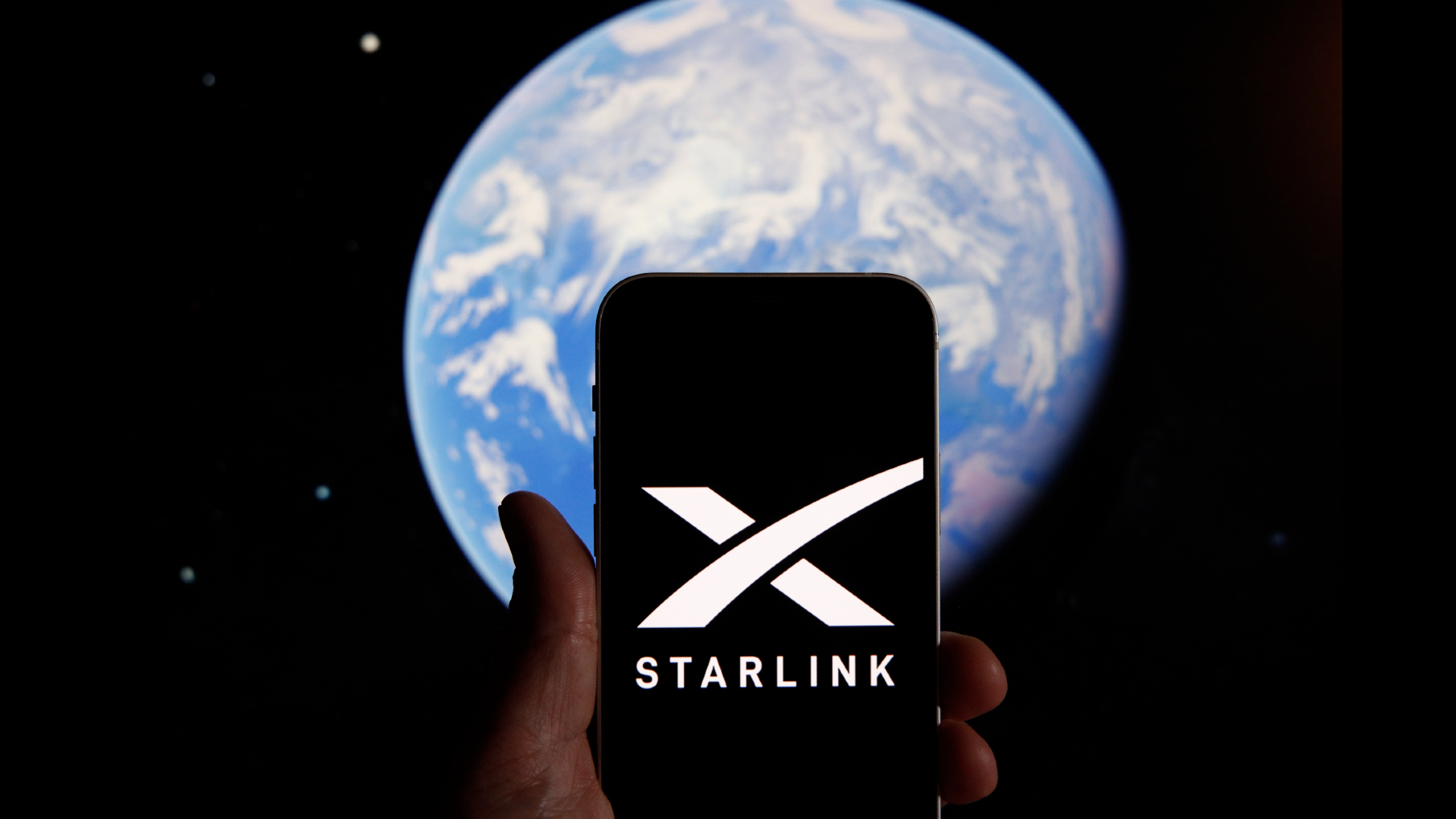
With the right equipment, access to Starlink internet can be achieved in remote locations within just a few minutes, making it a useful resource in emergencies.
According to a statement on Starlink's official website "Without the bounds of traditional ground infrastructure, Starlink can be deployed in a matter of minutes to support emergency responders in disaster scenarios."
"The Starlink team is proud to support and prioritize service for emergency responders around the globe and will continue to grow this support as our coverage areas expand." The statement continues.
The benefits of Starlink internet service in emergencies have already been demonstrated in Ukraine and Tonga.
Starlink, SpaceX's giant and ever-growing broadband constellation, has been a vital piece of Ukrainian communications infrastructure throughout the ongoing Russian invasion. Ukrainian government officials publicly requested Starlink terminals on Feb. 26, just two days after the invasion began, and the first ones arrived in the country on Feb. 28.
In early April, SpaceX and the U.S. Agency for International Development announced they had jointly delivered about 5,000 Starlink terminals to Ukraine, with SpaceX directly providing more than 3,000 of them. The number has grown considerably since then, to 25,000 or so, according to company founder and CEO Elon Musk.
The situation in Ukraine was not always smooth, as Musk noted in March 2022 that the Starlink terminals have been jammed near Ukraine conflict areas. The company was already working on an upgrade when Musk announced this, and he pledged a further pivot to cyber defense to keep the Starlinks operational.
In February 2022, at least 50 Starlink terminals were sent to the island nation of Tonga in the Pacific Ocean. The goal was to give its residents free Internet access, especially in remote villages. Tonga needed the terminals after suffering a massive volcano eruption and tsunami in January. At the time, SpaceX said the terminals will allow for communications to flow in some of the regions with the worst effects due to the eruption according to Reuters.
SpaceX's plans for Starlink
SpaceX has stated that it will work with organizations and space agencies to mitigate the impacts of its megaconstellation. And the company has tried to assuage astronomers' concerns over Starlink's effect on the night sky.
"SpaceX is absolutely committed to finding a way forward so our Starlink project doesn't impede the value of the research you all are undertaking," Patricia Cooper, SpaceX's vice president of satellite government affairs, told astronomers at a January 2020 meeting of the American Astronomical Society in Honolulu, Nature reported.
SpaceX has taken action to this effect. For example, recently launched Starlink satellites sport visors designed to prevent sunlight from glinting too brightly off their most reflective parts.
But the huge numbers of satellites in megaconstellations from SpaceX and other private space companies, such as OneWeb, suggest that light pollution and other issues may continue, and advocates have called for greater regulations from government agencies.
"Here is a gift for the leaders of the world, a task more non-partisan than any other which has come before: protect our skies," stargazer Arwen Rimmer wrote in The Space Review, a weekly online publication devoted to essays and commentary about space, in early 2020.
How do Starlink satellites work?
The current version of each Starlink satellite weighs 573 lbs. (260 kilograms) and is, according to Sky & Telescope magazine, roughly the size of a table.
Rather than sending internet signals through electric cables, which must be physically laid down to reach far-flung places, satellite internet works by beaming information through the vacuum of space, where it travels 47% faster than in fiber-optic cable, Business Insider reported.
Current satellite internet works using large spacecraft that orbit 22,236 miles (35,786 km) above a particular spot on Earth. But at that distance, there are generally significant time delays in sending and receiving data. By being closer to our planet and networking together, Starlink's satellites are meant to carry large amounts of information rapidly to any point on Earth, even over the oceans and in extremely hard-to-reach places where fiber-optic cables would be expensive to lay down.
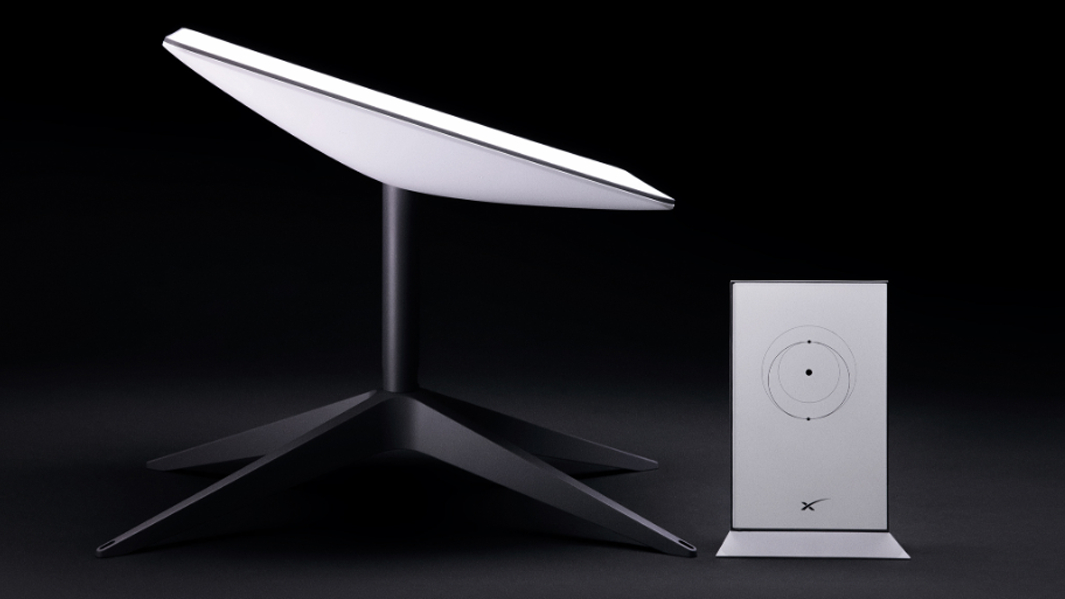
Users on the ground access the broadband signals using a kit sold by SpaceX. The kit contains a small satellite dish with a mounting tripod, a wifi router, cables and a power supply, according to the company's website.
How you can access Starlink's internet service
SpaceX has a dedicated website to order Starlink terminals. Go to the main page of the Starlink website and scroll down to the section that says "Order Now."
After plugging in your service address, you can see whether Starlink is available for your region. While pricing varies by region, a search for an address in Brooklyn in November 2022 gave a hardware price of $599.00, a one-time shipping and handling charge of $50.00, and a monthly service charge of $110.00.
Speeds are said to be much faster for many users in rural regions compared to local options, although again, this varies by region. "Users can expect to see download speeds between 100 Mb/s and 200 Mb/s, and latency as low as 20ms in most locations," the home page states.
Once your box arrives, you should see within it a Starlink kit that will allow you to connect to the Internet. A Starlink app, as well as a website user guide, are meant to guide you through the installation.
Additional resources
Explore Starlink satellites in more detail with this informative video from SpaceX. Read how astrophysicist Ethan Siegel thinks SpaceX can fix the damage Starlink satellites are causing to astronomy, published in Forbes.
Bibliography
NOIRLab, Report of the SATCON2 Workshop: Executive Summary, July 16, 2021 https://noirlab.edu/public/media/archives/techdocs/pdf/techdoc031.pdf
Boley, A., Byers, M. Satellite mega-constellations create risks in Low Earth Orbit, the atmosphere and on Earth, Scientific Reports, 20 May, 2021 https://www.nature.com/articles/s41598-021-89909-7
McDowell, J. The Low Earth Orbit Satellite Population and Impacts of the SpaceX Starlink Constellation, The Astrophysical Journal Letters, April 6 2020 https://iopscience.iop.org/article/10.3847/2041-8213/ab8016/meta
Massey R. et al. The challenge of satellite megaconstellations, Nature Astronomy, 6 November, 2020
https://www.nature.com/articles/s41550-020-01224-9
Join our Space Forums to keep talking space on the latest missions, night sky and more! And if you have a news tip, correction or comment, let us know at: community@space.com.
Breaking space news, the latest updates on rocket launches, skywatching events and more!
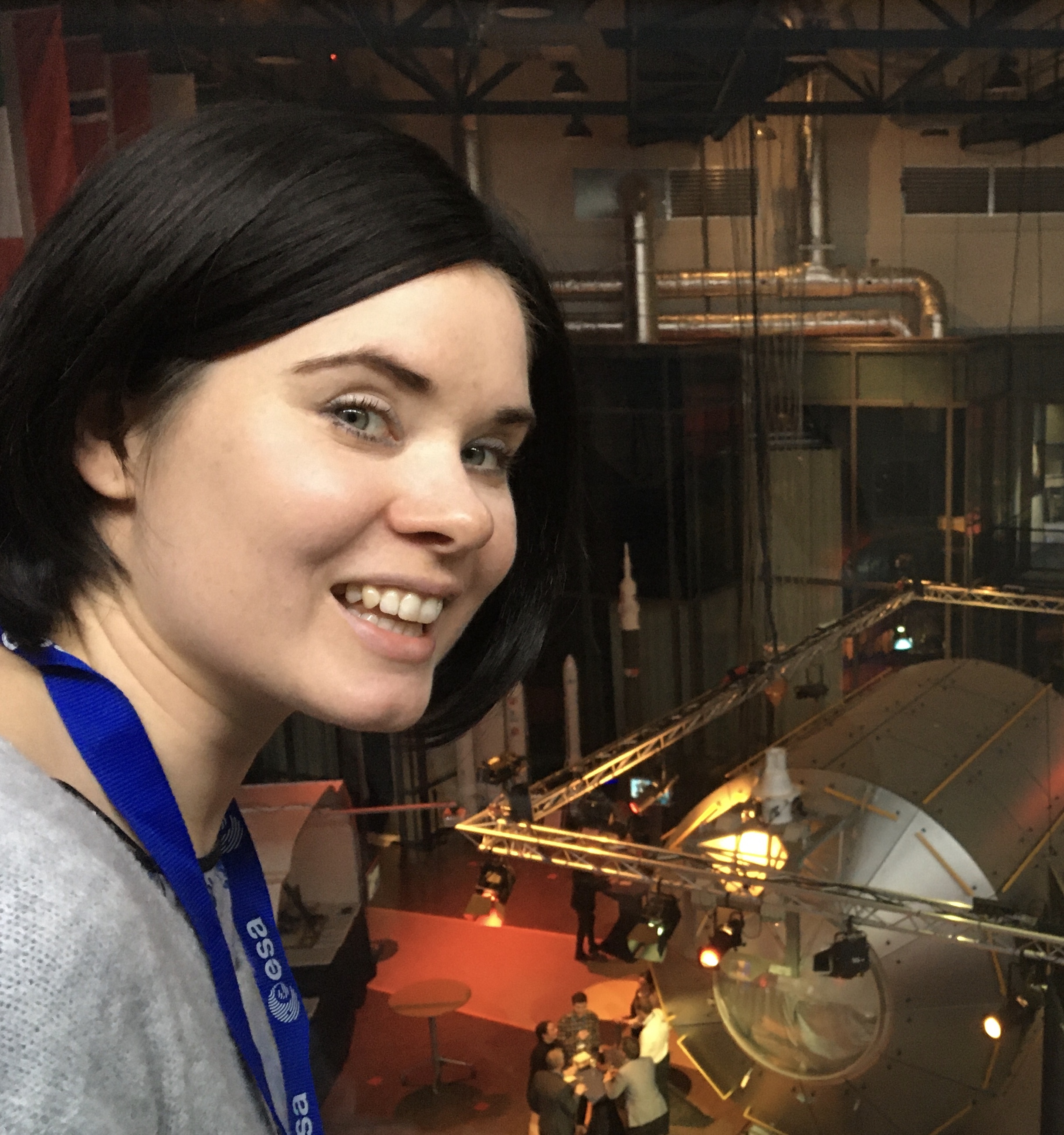
Tereza is a London-based science and technology journalist, aspiring fiction writer and amateur gymnast. Originally from Prague, the Czech Republic, she spent the first seven years of her career working as a reporter, script-writer and presenter for various TV programmes of the Czech Public Service Television. She later took a career break to pursue further education and added a Master's in Science from the International Space University, France, to her Bachelor's in Journalism and Master's in Cultural Anthropology from Prague's Charles University. She worked as a reporter at the Engineering and Technology magazine, freelanced for a range of publications including Live Science, Space.com, Professional Engineering, Via Satellite and Space News and served as a maternity cover science editor at the European Space Agency.
- Adam MannSpace.com Contributor
- Daisy DobrijevicReference Editor
You must confirm your public display name before commenting
Please logout and then login again, you will then be prompted to enter your display name.
